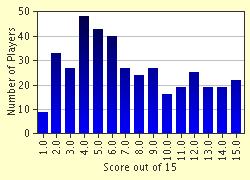Quiz Answer Key and Fun Facts
1. Sukiyaki is the most well-known example of a 'nabemono' (lit. pot thing), where all the meal is cooked at the table in a communal pot. Which of the following is not a nabemono?
2. Which of these foods are you most likely to be offered for lunch on a hot, humid day in August?
3. Yakisoba (stir-fried noodles) is an example of an everyday Japanese meal which you won't usually find in Japanese cookbooks because it is regarded as a Chinese dish. Apart from its Chinese origin, what makes yakisoba different from other 'soba' dishes?
4. What is 'ochazuke'?
5. Which of these vegetables are you least likely to find on your local supermarket shelf in rural Japan? (you can probably find anything in the big cities!)
6. We think of Japanese traditionally eating bowls of steaming white rice at every meal, but in less affluent times the rice was often mixed - or completely substituted - with which grain?
7. Many Japanese housewives are up early every morning preparing
'obento' lunchboxes for their family. Simple rice-balls (often actually triangles),usually wrapped in nori, are an obento staple. What are they called?
8. What are the main ingredients of 'nikujaga'?
9. What do chawanmushi and tamago-dofu have in common?
10. All your images of refined, sophisticated Japanese cuisine are destroyed when you first encounter 'omuraisu'! What is it?
11. Who in the family eats 'rinyushoku'?
12. A 'donburi' dish is a bowl of white rice with various toppings covered with sauce. 'Gyudon', for example is beef on rice and 'tendon' is tempura on rice with a sauce over the top. 'Oyako donburi' means 'parent and child donburi'. What are the main ingredients of this very common dish?
13. This dish is a popular winter nabemono and is also traditionally sold by street vendors. Various ingredients such as hard-boiled eggs, daikon radish, potatoes, deep-fried tofu and various types of fish paste dumplings are simmered in stock and eaten with mustard. What is it called?
14. When does the family eat 'osechi-ryori'?
15. The final question is a little unrelated but a tribute to the women who are usually responsible for doing all this cooking! Which of the following is not a Japanese word for 'wife'?
Source: Author
wajo
This quiz was reviewed by FunTrivia editor
Bruyere before going online.
Any errors found in FunTrivia content are routinely corrected through our feedback system.


